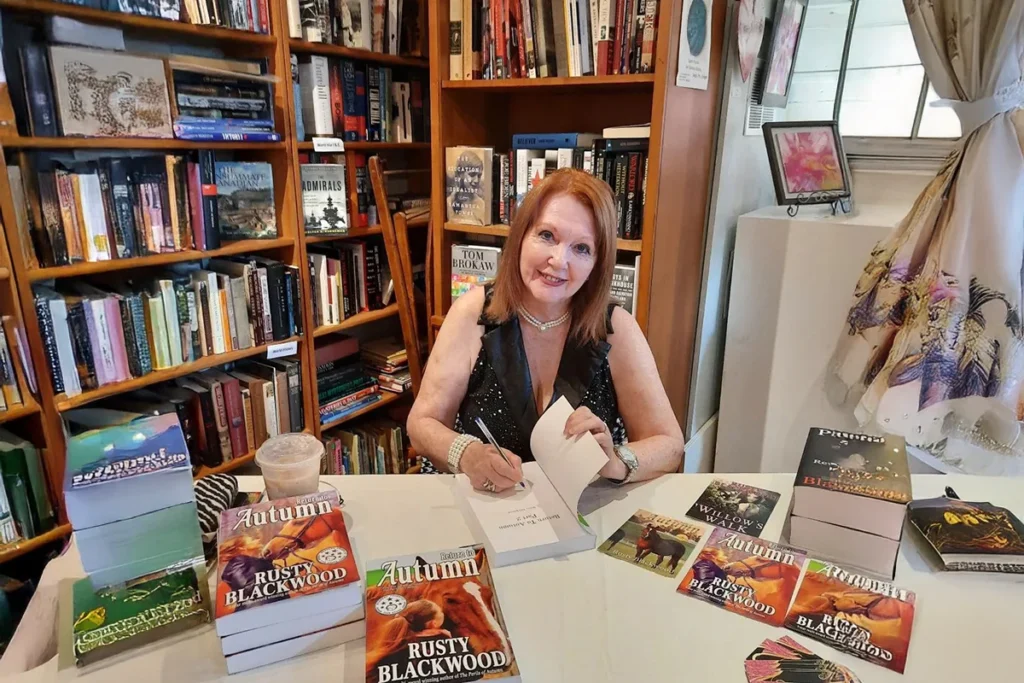PHOTO: James Calbraith, the masterful architect of historical fantasy, whose stories transport readers to vibrant, meticulously crafted worlds of the past.
Blending Cultures, History, And Fantasy Through Masterful Storytelling
James Calbraith brings history to life by blending meticulous research with fantasy, creating immersive worlds and relatable characters that resonate with themes of cultural identity and the human experience.
James Calbraith, a Poland-born Scottish author, has mastered the art of crafting extraordinary historical fantasy novels. With an innate passion for exploring diverse cultures and the history behind them, Calbraith seamlessly blends historical accuracy with the intrigue of fantastical elements in his works. His unique perspective and creative process elevate his writing, offering readers an unforgettable journey through time and imagination.
Calbraith grew up in communist Poland, where his youthful imagination was fueled by a diet of powdered milk, The Lord of the Rings, and Soviet science-fiction. These early influences set the foundation for a lifetime of storytelling. His first short story was published at the tender age of eight, and after years of exploration and finding his voice, he moved to London in 2007—marking the beginning of his journey as an English-language novelist. His debut, The Shadow of Black Wings, a Japanese historical fantasy, became a semi-finalist in the 2012 Amazon Breakthrough Novel Award. Now based in Edinburgh, where he finds new inspirations amidst hopes for an independent Scotland, Calbraith continues to create immersive historical worlds that captivate readers across the globe.
In an interview with Reader’s House, Calbraith shared insights into his creative process and the themes that recur in his works.
A World Inspired by History
Calbraith’s inspiration for his medieval world in The Song of Ash stemmed from a decade spent living near Wallington, a historic locale in London. With remnants of a Roman villa and an Anglo-Saxon cemetery nearby, he was struck by the contrast of cultures and the layers of history that coexisted in one place. This sparked his curiosity about how these Britons survived for centuries surrounded by Anglo-Saxon neighbors and how their coexistence shaped the identity of the area. Calbraith described how this historical dynamic mirrored the societal changes he witnessed around the time of Brexit, making the themes even more resonant.
“I wanted to describe this world, of natives and newcomers, locals and migrants, all living together in a tense relationship—as the old ways, old Empires, crumbled around them and a new way of life was forming from the ashes,” Calbraith explained.
Personal Background, Universal Themes
Calbraith’s storytelling draws deeply from his own experiences as a child of an occupied country and as an immigrant. His heritage compels him to write about the blending of cultures and the challenges faced by those caught between identities. Many of his characters reflect these themes: Bran, the protagonist of The Year of the Dragon, is a Welsh boy in feudal Japan, while Ash from The Song of Ash is a Saxon navigating Roman Britain. “They are all outsiders, having to survive among people different to them—trying to find common ground, confronting the injustices and prejudices that an Other suffers wherever and whenever they find themselves,” he said.
Blending History with Fantasy
While Calbraith’s initial forays into writing leaned toward science fiction and traditional fantasy, it was his passion for history that established his distinctive style. For him, real history often proves to be more intriguing than invented worlds, sparking his dedication to crafting stories firmly rooted in authentic historical settings. From minor mystical elements like visions to more fantastical inventions or dragons, Calbraith artfully incorporates fantasy into his historical narratives, tailoring each story’s balance as needed.
The Process of World-Building
Calbraith’s work begins with exhaustive historical research. He dives deeply into the tiniest details to ensure accuracy in his settings, striving for a level of authenticity that immerses readers in the worlds he builds. “I think I spend easily as much time researching and building the world as actual writing,” he noted. Only after perfecting the historical foundation does he breathe life into the story and characters, ensuring every narrative feels genuine and alive.
Advice for Aspiring Writers
When asked for guidance for writers delving into historical fantasy, Calbraith offered a straightforward yet profound perspective: “Write whatever you feel like. You and your editor will figure out best what works and what doesn’t for you and your readers.” However, he emphasized the necessity of loving history to write about it effectively. For him, history should not merely serve as the backdrop of a story but as an integral part of it—almost like a living character—shaping the plot and characters in meaningful ways.
Through his novels, James Calbraith has carved a unique niche in the literary world, demonstrating that history and fantasy, when harmoniously combined, can create unparalleled stories that both entertain and enlighten. From the vivid landscapes of medieval Greece to the intricate dynamics of Saxons and Romans, his works invite readers to experience history in a way that feels personal, thought-provoking, and deeply immersive.
For fans of historical fantasy and newcomers to the genre alike, James Calbraith’s novels are a true treasure, blending the best of the past and imagination into one unforgettable reading experience.
Source: Original interview conducted by Reader’s House Magazine.











